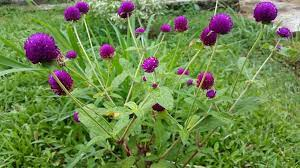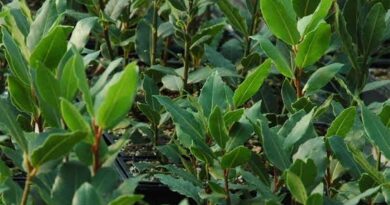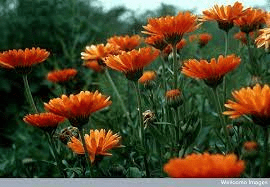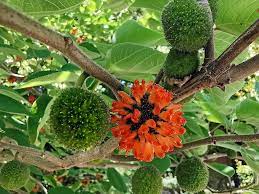18 Medicinal Health Benefits Of Gomphrena globosa (Globe amaranth)
Gomphrena globosa, commonly known as Globe Amaranth, is a popular and ornamental annual plant belonging to the Amaranthaceae family. Native to Central America, it has become widely cultivated and appreciated in gardens around the world for its unique and long-lasting globe-shaped flower heads.
The Globe Amaranth typically reaches a height of about 12 to 24 inches (30 to 60 cm) and is characterized by its branching habit. The leaves are simple, opposite, and elliptical in shape, providing a lush green backdrop to the vibrant and showy flowers.
The most distinctive feature of Gomphrena globosa is its spherical flower heads, which can be found in a variety of colors, including shades of purple, pink, red, and white.
These compact and globe-like inflorescences consist of numerous tiny, densely packed bracts that retain their color and shape even after drying. Due to this quality, Globe Amaranth is frequently used in dried flower arrangements and crafts.
Globe Amaranth is well-suited to a variety of growing conditions, thriving in full sun with well-drained soil. It is a resilient and low-maintenance plant, making it a favorite choice for both beginner and experienced gardeners. The plant is also known for its ability to attract pollinators, such as butterflies, adding to its ecological value.
Culturally, Gomphrena globosa has different meanings in various regions. In some cultures, it symbolizes immortality and longevity due to its long-lasting flowers. In others, it is associated with good luck and positive energy, making it a popular choice for decorative purposes during celebrations and festivals.
Globe Amaranth’s versatility, vibrant colors, and enduring nature have solidified its place as a cherished ornamental plant, both in gardens and in floral arrangements. Whether used fresh or dried, Gomphrena globosa continues to captivate with its charming and long-lasting blooms.
The Botanical Description of Gomphrena globosa
1. Plant Structure: Gomphrena globosa, commonly known as Globe Amaranth, is an annual herbaceous plant with a compact, bushy growth habit. It belongs to the Amaranthaceae family.
2. Height and Size: This plant typically reaches a height of 12 to 24 inches (30 to 60 cm). Its size may vary depending on growing conditions and cultivation practices.
3. Leaves: The leaves are simple, opposite, and ovate to elliptic in shape. They have a smooth texture and can be up to 3 inches (7.5 cm) in length.
4. Flowers: One of the distinctive features of Gomphrena globosa is its unique globe-shaped flower heads. These bract-surrounded flowers can be found in various colors, including shades of purple, pink, red, and white.
5. Inflorescence: The inflorescence of Globe Amaranth consists of dense, spherical clusters of tiny, clover-like flowers. These clusters are long-lasting and add ornamental value to the plant.
6. Bloom Period: The flowering period extends from late spring to early fall, making it an attractive choice for gardens and floral arrangements.
7. Root System: Gomphrena globosa typically has a fibrous root system, aiding in nutrient absorption and stability.
8. Adaptability: This plant is adaptable to various soil types but thrives in well-drained, moderately fertile soils. It also exhibits tolerance to drought conditions.
9. Sun Requirements: Globe Amaranth prefers full sun exposure for optimal growth and flower production.
10. Ornamental Value: Apart from its medicinal uses, Gomphrena globosa is widely cultivated for its ornamental value, adding color and vibrancy to gardens, borders, and floral displays.
11. Native Regions: Originally native to Central America, Gomphrena globosa has become naturalized in many tropical and subtropical regions worldwide.
12. Growing Conditions: The plant is relatively easy to grow and maintain, making it a popular choice for both experienced and novice gardeners.
The Geographic Distribution of Gomphrena globosa

1. Native Regions: Gomphrena globosa is native to Central America, with its natural habitat extending across countries such as Guatemala and Panama.
2. Global Cultivation: Due to its ornamental appeal and medicinal properties, Globe Amaranth is cultivated in various parts of the world. It has become naturalized in tropical and subtropical regions.
3. Cultivation in Asia: The plant is widely grown in Asian countries like India, China, and Thailand, where it is valued for its cultural significance and therapeutic uses.
4. Tropical and Subtropical Zones: Gomphrena globosa thrives in regions with tropical and subtropical climates, where it can receive ample sunlight and warm temperatures.
5. Garden and Landscape Use: Beyond its native and cultivated regions, Globe Amaranth is a popular choice for gardens and landscaping in temperate climates, grown as an annual.
6. Decorative Gardens: It is often featured in decorative gardens, borders, and flower beds, contributing to the visual appeal of outdoor spaces.
7. Naturalization: The plant has naturalized in some regions where it has been introduced, adapting to local environmental conditions.
8. Environmental Impact: While it is primarily cultivated for ornamental and medicinal purposes, its adaptability raises considerations about potential ecological impacts in non-native areas.
9. Local Names: In different regions, Gomphrena globosa may be known by various local names, reflecting its cultural significance.
10. Conservation Status: As a cultivated ornamental plant, Gomphrena globosa is not considered endangered. However, conservation efforts are crucial to protect its wild relatives and diverse ecosystems.
11. Traditional Uses: In its native regions, the plant has traditional uses in local medicine, cultural practices, and rituals.
12. Economic Importance: The cultivation and trade of Gomphrena globosa contribute to local economies, especially in regions where it is a popular ornamental plant.
The Chemical Composition of Gomphrena globosa
1. Flavonoids: Gomphrena globosa contains various flavonoids, including quercetin and kaempferol, known for their antioxidant properties.
2. Alkaloids: The plant may contain alkaloids, which can contribute to its medicinal effects.
3. Tannins: Tannins, with their astringent properties, are present in Gomphrena globosa and contribute to its traditional medicinal uses.
4. Saponins: Saponins, known for their foaming properties and potential health benefits, are found in the plant.
5. Polyphenols: Polyphenolic compounds, such as catechins, contribute to the plant’s antioxidant capacity.
6. Essential Oils: Some varieties of Gomphrena globosa may contain essential oils with aromatic and potentially therapeutic properties.
7. Terpenoids: Terpenoids, including various essential oils, may be present in the plant, contributing to its fragrance and potential health effects.
8. Lignans: Certain types of lignans may be identified in the chemical composition of Globe Amaranth.
9. Amino Acids: Gomphrena globosa may contain essential amino acids, contributing to its nutritional profile.
10. Vitamins: The plant may contain vitamins, such as vitamin C, which contributes to its overall health benefits.
11. Minerals: Essential minerals like iron, calcium, and potassium are part of the plant’s nutritional content.
12. Lipids: Lipids, including fatty acids, may be present in Gomphrena globosa, contributing to its overall chemical composition.
13. Glycosides: Certain glycosides may be identified in the plant, showcasing its diverse chemical constituents.
14. Proteins: The presence of proteins contributes to the nutritional value of the plant.
Read Also: Worm Infestation on Ruminant Animals: Symptoms and Treatment
The Medicinal Health Benefits Of Gomphrena globosa (Globe amaranth)

1. Anti-Inflammatory Properties: Gomphrena globosa exhibits anti-inflammatory effects, making it valuable for addressing inflammatory conditions such as arthritis and joint pain.
2. Antioxidant Action: The plant’s antioxidant compounds help combat oxidative stress, protecting cells from damage and supporting overall health.
3. Immune System Support: Gomphrena globosa may contribute to immune system support, enhancing the body’s defense mechanisms against infections.
4. Respiratory Health: Traditional uses include remedies for respiratory issues, such as coughs and bronchitis, showcasing its potential respiratory health benefits.
5. Cardiovascular Support: Compounds in Globe Amaranth may contribute to cardiovascular health by supporting blood circulation and managing blood pressure levels.
6. Anti-Diabetic Effects: Some studies suggest that Gomphrena globosa may have potential benefits in managing diabetes by regulating blood sugar levels.
7. Wound Healing: The plant has been traditionally used for wound healing, thanks to its anti-inflammatory and antimicrobial properties.
8. Gastrointestinal Health: Gomphrena globosa may have a positive impact on gastrointestinal health, addressing issues such as indigestion and promoting a healthy gut.
9. Antimicrobial Action: The plant’s antimicrobial properties make it valuable for combating infections caused by bacteria and fungi.
10. Menstrual Health: Traditional uses include remedies for menstrual issues, suggesting its potential in supporting women’s reproductive health.
11. Stress Reduction: Some compounds in Gomphrena globosa may have calming effects, contributing to stress reduction and relaxation.
12. Anticancer Potential: Preliminary research suggests that the plant may have potential anticancer properties, although further studies are needed to validate these findings.
13. Neuroprotective Effects: Compounds in the plant may have neuroprotective effects, supporting cognitive health and potentially reducing the risk of neurodegenerative conditions.
14. Anti-Allergic Properties: Gomphrena globosa may exhibit anti-allergic effects, making it useful for individuals with allergies or hypersensitivity reactions.
15. Liver Health: Traditional uses include remedies for liver-related issues, indicating potential benefits for liver health.
16. Anti-Aging Properties: The antioxidant-rich composition of Gomphrena globosa suggests potential anti-aging effects, protecting the skin from premature aging.
17. Antipyretic Action: The plant may have antipyretic properties, helping to reduce fever and alleviate associated symptoms.
18. Nutritional Benefits: In addition to its medicinal uses, Gomphrena globosa provides essential nutrients, contributing to overall nutritional well-being.
The Methods of Usage to Achieve the Provided Health Benefits Of Gomphrena globosa (Globe amaranth)
1. Herbal Teas: Prepare herbal teas using dried Gomphrena globosa flowers. Steep a teaspoon of dried flowers in hot water for 10-15 minutes. Consume up to three cups a day for various health benefits.
2. Tinctures: Tinctures can be created by extracting the plant’s active compounds in alcohol. Follow recommended dosage guidelines provided by herbalists or healthcare professionals.
3. Capsules or Supplements: Gomphrena globosa supplements, available in capsule form, provide a convenient way to incorporate the plant’s health benefits into a daily routine. Follow recommended dosage instructions.
4. Poultices: Create poultices using crushed Gomphrena globosa leaves or flowers. Apply directly to wounds or inflamed areas for localized healing.
5. Culinary Use: In some cultures, Gomphrena globosa is used in culinary dishes. Check local recipes or traditional practices for incorporating it into meals.
6. Aromatherapy: The aromatic properties of Gomphrena globosa may be harnessed through aromatherapy. Essential oils derived from the plant can be diffused for a calming atmosphere.
7. Infused Oils: Infuse oils with Gomphrena globosa to create topical solutions. Apply infused oils to the skin for conditions like inflammation or as a part of skincare routines.
8. Traditional Remedies: Explore traditional remedies from cultures where Gomphrena globosa is historically used. This may include specific preparations or combinations with other herbs.
9. Consultation with Herbalists: Seek guidance from herbalists or healthcare professionals who specialize in herbal medicine. They can provide personalized recommendations based on individual health conditions.
10. Gardening Practices: For those cultivating Gomphrena globosa at home, understanding optimal gardening practices ensures a fresh and sustainable supply of the plant for usage.
11. Integrative Medicine: Incorporate Gomphrena globosa into an integrative medicine approach, considering its potential synergies with other herbs or conventional treatments.
12. Adherence to Dosage Guidelines: Regardless of the method of usage chosen, adherence to recommended dosage guidelines is crucial to ensure safety and maximize benefits.
The Side Effects Of Using Gomphrena globosa Medicinal Plant
1. Allergic Reactions: Some individuals may experience allergic reactions to Gomphrena globosa. If allergic symptoms such as itching, swelling, or difficulty breathing occur, discontinue use and seek medical attention.
2. Gastrointestinal Discomfort: Excessive consumption may lead to gastrointestinal discomfort, including nausea, vomiting, or diarrhea. Adhere to recommended dosage guidelines to minimize the risk of these effects.
3. Interactions with Medications: Gomphrena globosa may interact with certain medications. Individuals taking prescription drugs should consult healthcare professionals before incorporating the plant into their regimen.
4. Pregnancy and Lactation: Pregnant or breastfeeding individuals should exercise caution. Limited research exists on the safety of Gomphrena globosa during these periods, and professional advice is recommended.
5. Photosensitivity: Some individuals may experience heightened sensitivity to sunlight when using Gomphrena globosa. Take precautions such as using sunscreen to minimize the risk of sun-related skin issues.
6. Blood Pressure Regulation: Gomphrena globosa may influence blood pressure. Individuals with existing blood pressure conditions should monitor their levels regularly and consult healthcare providers.
7. Liver Conditions: People with liver conditions should exercise caution, as Gomphrena globosa may have effects on liver health. Professional guidance is advised.
8. Children and Infants: The safety of Gomphrena globosa in children and infants is not well-established. Usage in this population should be under the guidance of healthcare professionals.
9. Diabetes Management: Individuals with diabetes should monitor blood sugar levels when using Gomphrena globosa, as it may influence glucose regulation.
10. Prolonged Usage: Extended use of Gomphrena globosa may lead to tolerance or unexpected effects. Periodic breaks in usage and professional consultation can help manage this risk.
11. Skin Irritation: Applying Gomphrena globosa preparations to the skin may cause irritation in some individuals. Conduct a patch test before widespread application.
12. Drug Sensitivity: Individuals sensitive to certain drugs or substances may also exhibit sensitivity to Gomphrena globosa. Careful observation and professional advice are essential.
13. Individual Variability: Responses to Gomphrena globosa can vary among individuals. Factors such as overall health, pre-existing conditions, and genetic factors contribute to this variability.
14. Quality of Preparations: The quality and preparation of Gomphrena globosa products can impact their safety. Choose reputable sources for obtaining herbal products and supplements.
Read Also: 16 Medicinal Health Benefits Of Solanum pseudocapsicum (Jerusalem Cherry)
The Scientific Research and Studies of Gomphrena globosa

1. Antioxidant Activity: Scientific studies have investigated the antioxidant activity of Gomphrena globosa, highlighting its potential in combating oxidative stress and associated health benefits.
2. Anti-Inflammatory Properties: Research suggests that Gomphrena globosa exhibits anti-inflammatory properties, indicating its potential in addressing inflammatory conditions and related disorders.
3. Antimicrobial Effects: Studies have explored the plant’s antimicrobial effects, showcasing its ability to combat bacteria and fungi. This may contribute to its traditional uses in treating infections.
4. Phytochemical Analysis: Phytochemical analyses have identified various bioactive compounds in Gomphrena globosa, including flavonoids, alkaloids, and polyphenols, emphasizing its rich chemical composition.
5. Wound Healing Potential: Scientific investigations have delved into the wound healing potential of Gomphrena globosa. The plant’s traditional use in promoting tissue repair aligns with findings supporting its efficacy.
6. Anti-Diabetic Properties: Some studies have explored the potential anti-diabetic effects of Gomphrena globosa, indicating its role in managing blood sugar levels. However, more research is needed for conclusive evidence.
The The Safety Precautions and Recommendations In Using Gomphrena globosa Medicinal Plant
1. Professional Guidance: Before incorporating Gomphrena globosa into health routines, seek guidance from healthcare professionals or herbalists. Their expertise ensures safe and informed usage.
2. Dosage Adherence: Adhere to recommended dosage guidelines provided by healthcare professionals or product labels. Avoid exceeding suggested amounts to minimize the risk of side effects.
3. Allergy Testing: Conduct allergy tests before widespread usage, especially if using Gomphrena globosa topically. This helps identify potential allergic reactions and ensures safe application.
4. Medication Interactions: Individuals on medications should consult healthcare providers to assess potential interactions. Gomphrena globosa may influence the efficacy of certain drugs.
5. Monitoring Blood Pressure: Regular monitoring of blood pressure is advisable, especially for individuals with existing blood pressure conditions. Report any unusual changes to healthcare professionals.
6. Pregnancy and Lactation: Pregnant or breastfeeding individuals should exercise caution and consult healthcare providers before using Gomphrena globosa due to limited safety data in these populations.
7. Sun Protection: Individuals experiencing photosensitivity should take precautions when using Gomphrena globosa, including the application of sunscreen to minimize the risk of sun-related skin issues.
8. Liver Health Monitoring: Those with pre-existing liver conditions should monitor their liver health when using Gomphrena globosa, as the plant may have effects on liver function.
9. Children and Infants: Exercise caution when considering Gomphrena globosa usage in children and infants. Professional guidance is essential to ensure safety in these populations.
10. Blood Sugar Monitoring: Individuals with diabetes should monitor blood sugar levels when using Gomphrena globosa, as it may influence glucose regulation.
11. Prolonged Usage Monitoring: Individuals using Gomphrena globosa for extended periods should periodically reassess its effects and consider breaks in usage to manage potential tolerance.
12. Skin Patch Tests: Before using Gomphrena globosa topically, conduct a patch test on a small area of skin to check for any adverse reactions or irritations.
13. Quality Assurance: Choose reputable sources for obtaining Gomphrena globosa products, ensuring quality and safety. Be cautious of potential contaminants or adulterations.
14. Reporting Side Effects: Report any unexpected side effects or adverse reactions to healthcare professionals. Prompt reporting contributes to ongoing safety assessments.
15. Personal Health History: Consider individual health history, including pre-existing conditions and sensitivities, when incorporating Gomphrena globosa into health routines.
16. Integrative Approach: If using Gomphrena globosa as part of an integrative health approach, inform healthcare providers to ensure compatibility with other treatments.
FAQs About Gomphrena globosa Medicinal Plant
1. Is Gomphrena globosa safe for regular consumption?
Gomphrena globosa is generally safe when consumed within recommended doses. However, individual responses vary, and professional guidance is advised, especially for prolonged usage.
2. Can Gomphrena globosa be used during pregnancy?
Pregnant individuals should exercise caution, as limited safety data is available. Consultation with healthcare providers is crucial to assess potential risks and benefits.
3. Are there specific contraindications for Gomphrena globosa usage?
Individuals with known allergies to the plant or its components should avoid Gomphrena globosa. Additionally, those with specific medical conditions should seek professional advice.
4. How does Gomphrena globosa contribute to skin health?
Gomphrena globosa’s antioxidant and anti-inflammatory properties may benefit skin health. It is used traditionally for wound healing and skin-related conditions.
5. Can Gomphrena globosa be used for respiratory issues?
Traditional uses include remedies for respiratory conditions, but professional advice is recommended. Its potential anti-inflammatory effects may support respiratory health.
6. Is Gomphrena globosa suitable for children?
Usage in children should be under professional guidance. Dosage and safety considerations may differ for this population.
7. Can Gomphrena globosa be used for diabetes management?
Some studies suggest potential anti-diabetic effects. However, individuals with diabetes should monitor blood sugar levels and consult healthcare providers.
8. What precautions should be taken for Gomphrena globosa topical applications?
Conduct skin patch tests before widespread use to check for allergic reactions or irritations. Professional advice is essential for topical applications.
9. How can Gomphrena globosa be integrated into culinary practices?
In some cultures, Gomphrena globosa is used in culinary dishes. Explore local recipes for creative ways to incorporate it into meals.
10. Are there specific considerations for individuals with liver conditions?
Individuals with pre-existing liver conditions should monitor their liver health when using Gomphrena globosa, as it may have effects on liver function.
11. Can Gomphrena globosa interact with medications?
Yes, Gomphrena globosa may interact with certain medications. Consult healthcare providers to assess potential interactions, especially for those on prescription drugs.
12. Is there scientific evidence supporting the medicinal uses of Gomphrena globosa?
Scientific studies have explored various aspects of Gomphrena globosa, including its antioxidant, anti-inflammatory, antimicrobial properties, and potential health benefits. However, further research is needed for conclusive evidence.
13. What are the considerations for individuals with blood pressure conditions?
Individuals with existing blood pressure conditions should monitor their levels regularly when using Gomphrena globosa. Any unusual changes should be reported to healthcare providers.
14. How can Gomphrena globosa be incorporated into aromatherapy?
Essential oils derived from Gomphrena globosa can be diffused for aromatherapy. The aromatic properties contribute to a calming atmosphere.
Read Also: How to Make Your Own Organic Pesticides









